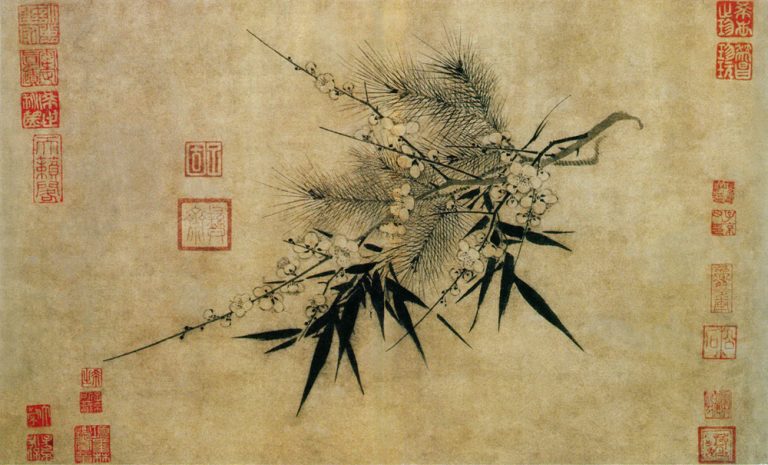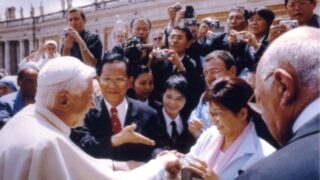Sometimes, tolerance is appreciated as a value and idea, but when it comes to practice it, it becomes less appealing. Some religious movements learned this the hard way.
by Karolina Maria Kotkowska*
*A paper presented at the webinar “Tai Ji Men: Affirming the Core Value of Tolerance,” co-organized by CESNUR and Human Rights Without Frontiers on November 16, 2023, International Day for Tolerance.


November 16 marks the International Day for Tolerance, as designated by the United Nations in 1996. This day is dedicated to encouraging mutual understanding among various cultures and communities. Its goal is to nurture respect, dialogue, and collaboration among diverse cultures and religions in order to create a more tolerant global society. It serves as a reminder to cherish diversity and advocate for acceptance, comprehension, and respect towards every individual, irrespective of their backgrounds, beliefs, or traditions. At the very core of the establishing of that UN day lays the persuasion that a lack of tolerance breeds violence, conflicts, and wars. This reality is particularly stark today amidst catastrophic ongoing wars.
This day of observance was announced in the Article 6 of the Declaration of Principles on Tolerance proclaimed and signed by the Member States of UNESCO on 16 November 1995. It stands as a pivotal document emphasizing the multifaceted aspects of tolerance. It delves into various dimensions of tolerance, extending from the state level to social realms and the pivotal role of education. It states: “Education is the most effective means of preventing intolerance. The first step in tolerance education is to teach people what their shared rights and freedoms are, so that they may be respected, and to promote the will to protect those of others” (Declaration of Principles on Tolerance, 4.1). As the Secretary-General of the UN in 2015, Ban Ki-Moon wrote: “People are more connected—but this does not mean there is more understanding.” It is indeed true, and it emphasized how crucial the role of the education is.


Upon visiting the UNESCO-themed tolerance website, we notice that the focus revolves around nurturing curiosity and questioning, especially in children. The platform provides resources and materials intended to spark curiosity, specifically to comprehend diversity and differences. This natural curiosity about what is different lays the foundation for learning, embracing, and appreciating what was once unfamiliar. This tendency is particularly innate in children, who approach new experiences without prejudice or bias since everything is a new discovery for them.
Why do some adults not maintain the same level of curiosity? Sometimes, the absence of curiosity, along with prejudices and biases, arises from normative approaches to one’s own and other cultures. Sometimes, tolerance is also appreciated as a value, and idea, but when it comes to use it in one’s life, it becomes somewhat less appealing. In Poland, we have a joke: What is the most popular beer in Poland? Tolerancyjny Ale. Of course, “ale” is an English word used internationally for a type of beer. However, in Polish, “ale” means “but,” so the phrase can be read in two ways: as referring to ale as a type of beer and also as “tolerant, BUT…” If someone says they are tolerant “but” something, it is pretty sure they just aren’t.
The same happens with institutions and various well-established structures. There are many examples in the history, where certain values seemed to be at the core of some institution—which was actually fighting other groups that were practicing the same values. When a group breaks away from an initially common organization, or it just appears near it, it highlights its weak points and hypocrisy, and disrupts the comfortable status quo. One example within Christianity could be the Reformation.


But what about tolerance? Does sharing tolerance as a core value guarantee that a group promoting it will be treated with tolerance and understanding? It does not seem so. Indeed, certain religious or spiritual groups face intolerance despite advocating principles of tolerance and equality. One notable example is the Bahá’í Faith. This faith emphasizes unity, equality among all people, and the eradication of prejudice. However, followers of this faith have encountered persecution in various parts of the world, including Iran, where the religion originated. Bahá’ís have endured discrimination, imprisonment, and even violence due to their beliefs in promoting unity and equality across all races, religions, and genders. Similarly, some sects within Islam, such as the Ahmadiyya Muslim community, advocate for peace, tolerance, and interfaith dialogue. Yet, they have faced persecution and discrimination in certain countries due to their interpretation of Islam differing from mainstream beliefs.
Another example, reaching far in the past, to the last quarter of the 19th century, is Theosophy. The Theosophical Society established in 1875, based on its principles of unity and tolerance, tried to form a nucleus of the universal brotherhood of humanity without distinction of race, creed, sex, caste, or color, which was very progressive for that time. The idea of a universal brotherhood was based on the ontological pantheism and the belief that every person must go through the same stages of evolution. If someone can incarnate as a person of different genders, races, and be raised in different religions in subsequent lives, there is no point in claiming that any condition is better or worse. What is important is to strive for the truth and support each other. This main goal had an important social dimension and resulted in an involvement in current community affairs and even political activism. Theosophists played important roles in initiatives that contributed to the formation of the United Nations and UNESCO. They also significantly influenced the history of education and art. However, despite these contributions, Theosophy, characterized as an unusual blend of philosophies intertwined with the spiritual realm and conveyed through religious terminology, became an easy target for criticism. It evolved into something considered best kept out of public view. As a result, its influence was long overlooked and can only now be reconstructed by scholars from the perspective of intellectual history.


And an example that is very significant today is Tai Ji Men. Tai Ji Men worldview and practices revolve around the promotion of inner harmony, mutual respect, and understanding among individuals and communities, contributing to a more tolerant and peaceful world. Yet, Tai Ji Men as well faces intolerance, misunderstanding, stigmatization, and tax harassment.
Tai Ji Men is known for its advocacy of tolerance and peace through various means which includes promotion of cultural understanding. It underlines the importance of cultural diversity and understanding among different communities. Tai Ji Men Shifu (Grand Master) and dizi (disciples) seek to bridge cultural gaps and promote harmony among people of various backgrounds. Tai Ji Men advocates for spiritual development, emphasizing conscience, inner peace, and harmony. These values are seen as fundamental in fostering tolerance, understanding, and peaceful coexistence among individuals and societies.


Tai Ji Men’s practice of Tai Chi and Qigong itself promotes balance, tranquility, and respect. It is not just a martial art but also a form of moving meditation, encouraging mindfulness, and fostering a sense of calmness and understanding.
Tai Ji Men advocates for human rights, social justice, and religious freedom. Its Shifu and dizi actively participate in forums, discussions, and initiatives aimed at promoting tolerance and peace on a global scale. And last but not least, Tai Ji Men engages in educational programs and workshops that emphasize the importance of tolerance, respect, and peaceful conflict resolution. It fits well in the previously mentioned Declaration of the Principles on Tolerance, which proclaims: “Education for tolerance should aim at countering influences that lead to fear and exclusion of others, and should help young people to develop capacities for independent judgement, critical thinking and ethical reasoning.” Let’s hope that educating the world about Tai Ji Men will also bring to them the tolerance they have missed for over two decades.









